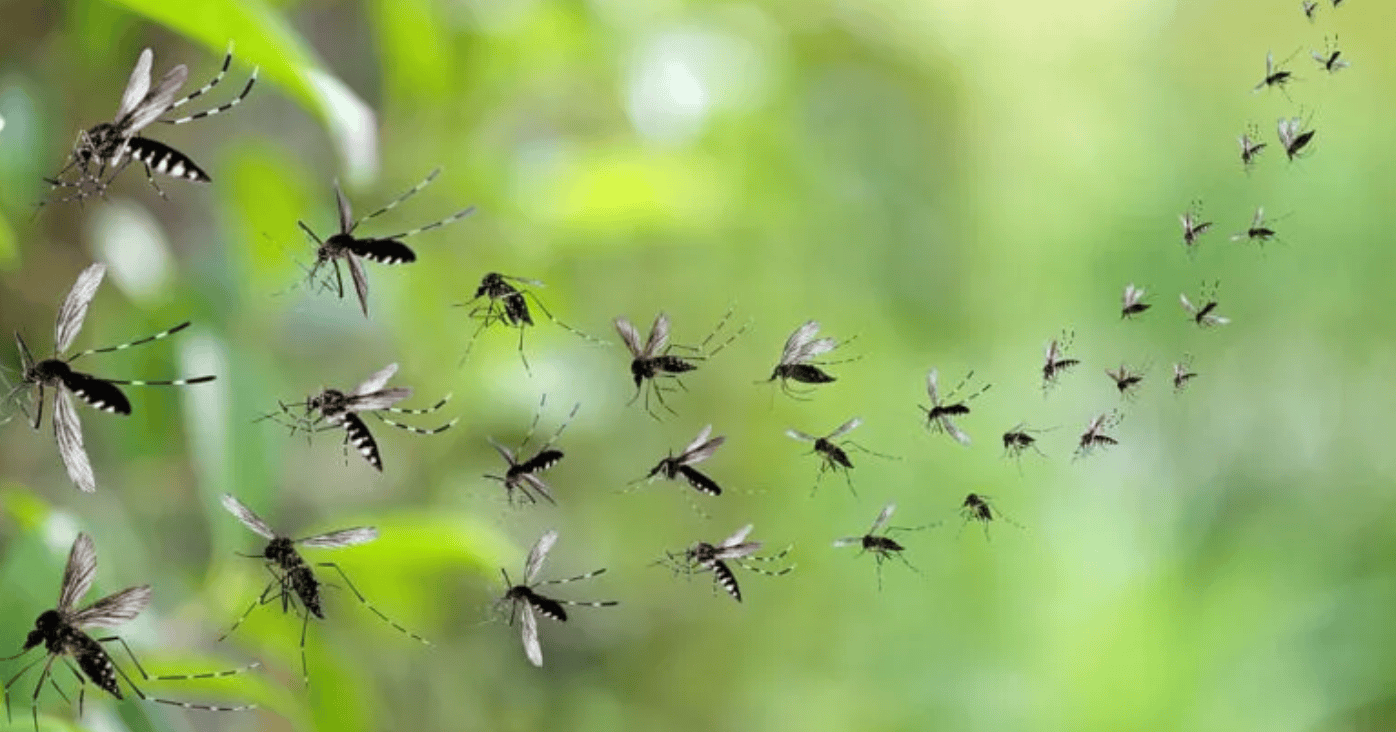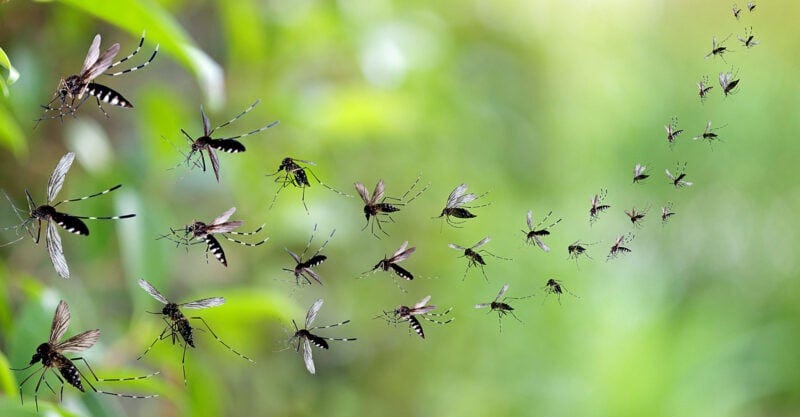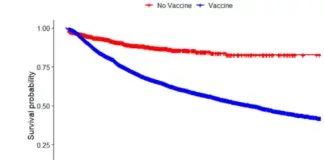Up to 775,992,000 bacteria-infected mosquitoes could be released in Maui every week for the next 20 years, according to Hawaii Unites.
This article was originally published by The Defender — Children’s Health Defense’s News & Views Website.
Up to 775,992,000 bacteria-infected mosquitoes could be released in Maui every week for the next 20 years, according to Hawaii Unites, an environmental advocacy group that last month lost its bid to require the state to conduct an environmental impact statement before allowing the controversial project to proceed.
Hawaii Unites in May 2023 sued the state in the Circuit Court of the First Circuit in Hawaii. The group’s president and founder, Tina Lia, told The Defender:
“These biopesticide lab-altered mosquitoes are already being released in East Maui. Hawaii Unites has taken the state to court seeking a ruling to require an environmental impact statement for the project and comprehensive studies of the risks.”
She said Hawaii Unites describes itself as “a 501(c)(3) nonprofit organization dedicated to the conservation and protection of our environment and natural resources,” with a focus on “protecting the health of Hawai‘i’s people, wildlife, and the ‘āina from the State of Hawaii’s biopesticide bacteria-infected mosquito experiment.”
According to the group’s lawsuit, the state did not perform a sufficient environmental impact study prior to the launch of the project. Last year, state residents submitted 291 pages of public comments, both for and against the project.
“The final environmental assessment for this project is insufficient under the Hawai‘i Environmental Policy Act,” Lia said. “[It] fails to describe mitigation measures or biosecurity protocols for the mosquitoes, and the discussion of alternatives is inadequate.”
According to Lia, the Birds, Not Mosquitoes partnership claims it plans to suppress southern house mosquitoes that transmit avian malaria to native birds by rendering male mosquitoes — which carry the Wolbachia bacterium that causes avian malaria — unable to reproduce.
The technology, Wolbachia incompatible insect technique (IIT), previously was endorsed by Gates Philanthropy Partners, an arm of the Bill & Melinda Gates Foundation, although there does not appear to be a direct link between these organizations and the Hawaii ongoing project.
An expert who testified on behalf of Hawaii Unites warned that the project, far from mitigating mosquito-borne illness, may lead to bacterial spread, the invasion of lab-altered mosquitoes into unintended areas and other environmental consequences.
But the court disagreed, ruling that the final environmental assessment “was compiled in good faith and set forth sufficient information to enable the [Board of Land and Natural Resources] to consider fully the environmental factors involved and to make a reasoned decision after balancing the risks of harm to the environment against the benefits to be derived from the proposed action.”
According to the lawsuit, “documentation and studies from several sources, including government agencies, confirm that the experiment may not even work for its intended purpose and has the potential for significant environmental impacts.”
The lawsuit also noted that the IIT method has never been tried in Hawaii, while “the
specific experimental technique planned for use in East Maui has never been tried before anywhere in the world.”
According to the lawsuit, the regions of Maui where the release will take place include “the fragile ecosystems of East Maui’s Haleakalā National Park, Ko‘olau Forest Reserve, Hāna Forest Reserve, Hanawī Natural Area Reserve, Kīpahulu Forest Reserve, Makawao Forest Reserve, and Waikamoi Preserve,” as well as privately managed lands.
“At the highest frequency, this could result in over 807 billion mosquitoes released in one of the most unique and fragile ecosystems in the world,” the lawsuit stated. “Contrary to the assertions in the [final environmental assessment], the plan could actually pose serious risks to native birds, wildlife, the ‘āina, and public health.”
The State of Hawaii refuted these claims in its motion for summary judgment, filed Dec. 22, 2023.
Hawaii Unites on Jan. 9 filed a 70-page memorandum further detailing the group’s arguments, but First Circuit Court Judge John M. Tonaki granted summary judgment in favor of the state.
Lia told The Defender there are “several issues” with the ruling should the group decide to appeal Tonaki’s decision.
Lia said that there are significant differences between what was proposed in the final environmental assessment and what is currently being implemented in East Maui. For example, she said the group believes mosquitoes are being released solely by helicopter rather than drones, which is inconsistent with the release system described in the environmental assessment.
“This means that helicopters are flying closer to the tree canopy than the level stated in the FEA [final environmental assessment], increasing the potential for adverse impacts such as noise disturbances; nesting, breeding, and roosting disturbances; helicopter rotor wash; accidents and collisions; and wildland fires,” she said.
According to Lia, Tonaki disregarded the testimony of an expert witness, tropical disease and vector expert Dr. Lorrin Pang, head of Hawaii’s District Health Office for Maui, who testified as a private citizen on behalf of Hawaii Unites “about the state’s lack of study of the risks of the project.”
Lia said:
“The court failed to acknowledge Dr. Pang’s serious concerns about horizontal transmission of introduced bacteria, biopesticide wind drift of lab-altered mosquitoes into unintended areas, superinfection of mosquitoes with multiple bacteria strains, increased pathogen infection and disease-spreading capability in mosquitoes, and the experimental nature of the project — all issues that were insufficiently addressed or missing entirely from the FEA, and facts material to the lawsuit.”
Project enjoys powerful backing
According to Lia, the U.S. Department of the Interior provided more than $30 million for the avian malaria phase of the state’s plan. The project also has secured more than $14 million from the bipartisan Infrastructure Investment and Jobs Act enacted in 2021 and an additional $16 million through President Joe Biden’s 2023 Investing in America Agenda to Prevent the Imminent Extinction of Hawaiian Forest Birds.
“Grants, partnerships with mainland universities, and public and private funding are anticipated to incentivize the use of lab-altered mosquito technology in Hawai‘i well into the future,” she said.
Birds, Not Mosquitoes states that the project is funded through a mix of public and private donors, including anonymous donors, including the American Bird Conservancy, Hawaiʻi Department of Land and Natural Resources, the U.S. Fish and Wildlife Service, the National Park Service, The Nature Conservancy, and the National Fish and Wildlife Foundation.
Previous funders included “the Hawaiʻi Invasive Species Council and anonymous private donors.”
Another organization that partners in the project, the Kauai Forest Bird Recovery Project, lists Corteva Agriscience as one of its partners. Corteva Agriscience is a conglomerate formed via the merger of Dow AgroSciences and DuPont/Pioneer and owns many patents for the CRISPR gene-editing technology.
Notably though, the mosquitoes in use in the Hawaii project are not known to be genetically modified.
In a March 2022 interview with Gates Philanthropy Partners, Scott O’Neill, Ph.D., founder of the World Mosquito Program, praised the abilities of Wolbachia, the bacterium now in use in the Hawaii project, which he said is “safe for humans because it thrives in honeybees, butterflies, moths, and fruit flies,” as they are “part of our food chain.”
O’Neill added:
“What makes Wolbachia a medical miracle is the fact that when it is introduced into Aedes aegypti [mosquitoes], it effectively blocks the capacity of many of the viruses that make people sick from growing in the mosquito. And if the viruses can’t replicate, they can’t be transmitted to humans.
“Our team successfully introduced a strain of Wolbachia taken from fruit flies into Aedes aegypti more than a decade ago, and over the past 10 years, we have shown that when Wolbachia-carrying Aedes aegypti are released into the environment, they collapse dengue transmission in that location. We are also confident that it is effective against chikungunya, Zika, and many other arboviruses based on our laboratory research.”
‘Maui is ground zero for these mosquito releases’
Lia said her group is concerned that the mosquitoes currently being released are experimental.
“The state has lied about the fact that foreign bacteria is being brought into Hawai‘i through the infection of these mosquitoes, and the mosquitoes themselves are foreign organisms that originate from outside the islands. The state has also lied about the documentation showing that up to 3,103 lab-altered female mosquitoes that bite, breed and spread disease are allowed to be released weekly on Maui,” Lia added.
“There are no biosecurity protocols for these imported mosquitoes and no mitigation plan in place if something goes wrong,” she said.
“Wolbachia bacterium is a life form, and there’s no way for this project to be self-contained. The bacteria can transmit horizontally in the environment to wild mosquitoes and other insect vectors of disease.”
“Mosquito populations on Maui might be overtaken and replaced by these lab-altered mosquitoes,” Lia said.
“What if it turns out that they are more capable of spreading disease?” Lia asked. “Southern house mosquitoes transmit human diseases including West Nile virus, encephalitis and elephantiasis, and they’re a potential vector of Zika virus.”
She added:
“Pathogen screenings for these mosquitoes are unknown, and that information is being withheld from the public. Lab-infected male mosquitoes can transmit viruses to biting females through mating. Biopesticide drift, the drift of lab-altered mosquitoes on the wind to unintended areas, could affect not only the efficacy but the safety of the project. Superinfection of mosquitoes with multiple strains of Wolbachia bacteria could also impact efficacy and safety.
“All of these mechanisms can interact with each other and cumulatively have substantial adverse effects. None of this has been studied by the Birds, Not Mosquitoes agencies releasing these mosquitoes … The scope and magnitude of this plan have potential significant impacts that could cause catastrophic effects on the health of our islands.”
According to Lia, Hawaii Unites has launched a campaign to raise $30,000 needed by the end of the month to file an appeal.
“If the Judge’s decision is not appealed, it will set a precedent for allowing inadequate environmental review of future proposed experimental projects that could have significant impacts to our fragile ecosystems,” Lia said.
Should an appeal go forward, Lia said her group expects “to obtain admissions from the state that proper studies have not been done to assess the risks of this project.”
“We further anticipate that documents, contracts, and communications requested from the state will reveal important details about this project that have been misrepresented to the public,” she added.
“Maui is ground zero for these mosquito releases, and our case in environmental court can set a strong precedent for stopping this agenda from moving forward here in Hawai‘i and from expanding globally,” Lia said. “This case, and our voices as a community, have a right to be heard.”
Disclaimer: We at Prepare for Change (PFC) bring you information that is not offered by the mainstream news, and therefore may seem controversial. The opinions, views, statements, and/or information we present are not necessarily promoted, endorsed, espoused, or agreed to by Prepare for Change, its leadership Council, members, those who work with PFC, or those who read its content. However, they are hopefully provocative. Please use discernment! Use logical thinking, your own intuition and your own connection with Source, Spirit and Natural Laws to help you determine what is true and what is not. By sharing information and seeding dialogue, it is our goal to raise consciousness and awareness of higher truths to free us from enslavement of the matrix in this material realm.
 EN
EN FR
FR



























